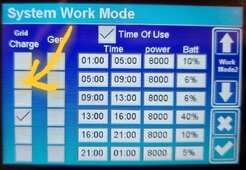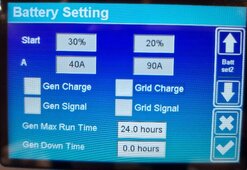shadowmaker
Solar Addict
Yes, but it's Chinese engineering...And you didn't get the idea SOC protection was there for a reason ?
In general Don't get why people feel the need to go again cell manufactorer, inverter manufactorer and battery manufactorer.
If you need to go that low, maybe it is time to add batteries
I understand one may want to do so for some testing once or twice..
But thats it
With SOC protection enabled my batts stopped discharging around 3,17-3,19V cell voltages. From all the reading I have done I concluded going down to 3,0V and with max 0,16C discharge it should still be safe with LFP and shouldn't affect cycle life much.
EDIT. And yes I certainly could do with more batteries (2x10kWh more ordered), but for summer 100-150kWh seems to be enough. For winter I'd need 600kWh to get through 3 days and we can have weeks without any decent sun. I'm grid tied like you already know, so moneywise 600kWh or more is not my best option.
Last edited:




